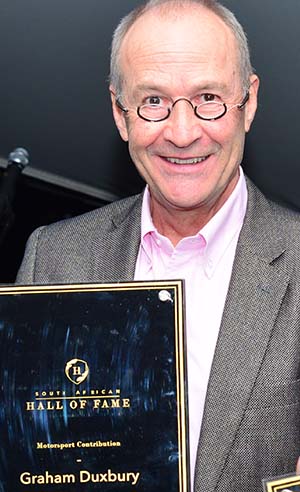The Americans have always seemed to have had a sceptical, if not jaundiced view of Formula One racing. This, despite the Indianapolis 500 – the self-proclaimed “greatest race on earth” – being part of the F1 World Drivers’ Championship from 1950 to 1960.
 Nevertheless, a number of American drivers have taken on the F1 challenge in the past with many successes.
Nevertheless, a number of American drivers have taken on the F1 challenge in the past with many successes.
In addition to two great world champions, Phil Hill and Mario Andretti, the history books record the achievements of drivers of the calibre of Dan Gurney, Richie Ginther, Peter Revson, Eddie Cheever, Masten Gregory, Mark Donohue and even George Follmer who scored a world championship point on debut in the 1973 South African Grand Prix at Kyalami and a podium at his next race in Spain.
Today, however, there are no US drivers and the Haas team is the sole US-based constructor in F1. Why is this?
The answer is most likely related to money – or sponsorship. F1 is not a popular sport in the US where there is a rich and varied racing culture with the Nascar and IndyCar series taking priority and attracting large TV audiences.
F1 has also had a bad reputation among US fans since the 2006 US GP at the Indianapolis road course.
In one of the most controversial races in modern history, only the six cars made the start. F1 detractors in the US dubbed the race “Indygate” and correctly predicted a drop in F1’s appeal in the US.
However, times are changing. Fourteen years on and Indygate memories are fading. Haas has established itself as a solid midfield contender and the US GP has, since 2012, found a popular home at the Circuit of the Americas in Texas.
Significantly, F1 itself is now owned by an American organisation, Liberty Media, whose goals include raising F1’s profile in America and bringing more F1 races to the “Land of the Free”.
Fortuitously, Fernando Alonso’s appearance at the Indy 500 went some way towards supporting Liberty’s efforts. And current champion Lewis Hamilton’s somewhat-controversial out-of-the-cockpit exploits, regularly highlighted in the US media, have also served to support Liberty’s cause.
What’s missing in F1 is an American driver to pick up where the US stars of the past left off.
Unfortunately, there hasn’t been an American in F1 since Scott Speed. He graduated from the same Red Bull young driver programme as four-time champion Sebastian Vettel but ultimately lacked the talent to live up to his name.
His failure to score a single point for Toro Rosso saw him replaced by Vettel midway through the 2007 season. Rookie Vettel’s win for the team in Italy in 2008 must have stung.
F1, with only 20 race seats available, is not an easy sport to break into.
Current IndyCar champion Josef Newgarden has always expressed a desire to drive in F1. The only American to win the prestigious Formula Ford Festival in England, he also spent a year in the European GP3 series.
“I wanted to stay and try for F1,” he said in an interview. “I did really well, but then ran out of money.”
Now a fan favourite, with two IndyCar championships to his name, Newgarden still has visions of F1 – but thinks the attitude of power brokers in the sport make it difficult for even a top American driver to break through.
“There’s American talent that, if they got the right seat at the right time, could win [F1] championships, no problem,” he says.
Perhaps the most important hurdle to overcome for American drivers aspiring to a F1 future is a mental one.
“F1 is very glamorous, but if you’re not in a Ferrari or a Mercedes you might as well not show up,” stresses Newgarden. “There’s zero chance you’re going to win. That’s demoralising.”
Will the 14-year-old Texan driver Jak Crawford have the mental fortitude to overcome this psychological barrier? With IndyCar-related media claiming he is “one of the most talented racers in the world” young Crawford recently joined the Red Bull Junior Team and has been placed with Van Amersfoort Racing to complete in both the 2020 German F4 and Italian F4 championships (as soon as they resume, post-Covid-19).
His planned route to F1 stardom, via Van Amersfoort, has also been followed by Max Verstappen and Charles Leclerc.
